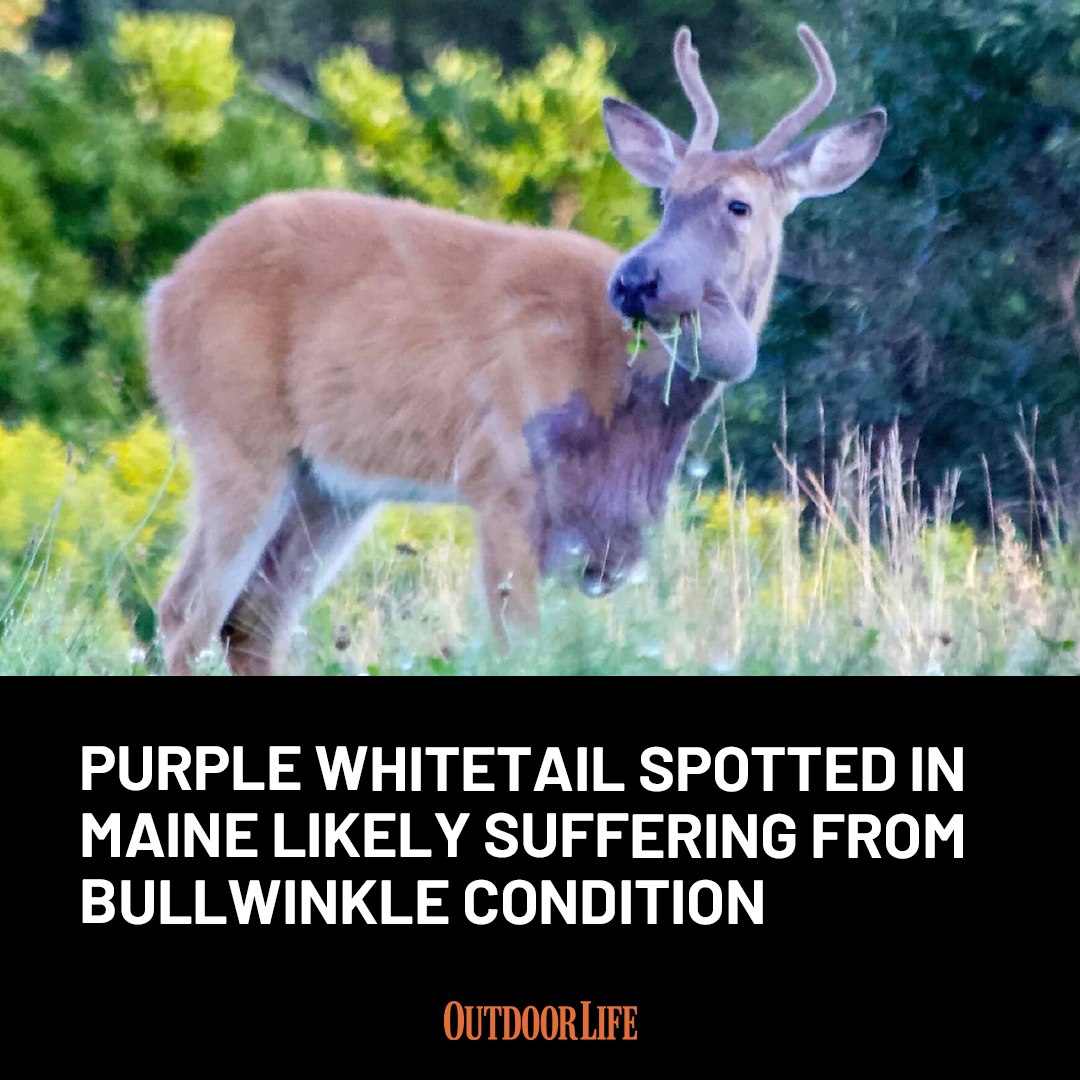Sept. 11, 2023. On Aug. 31, a Maine wildlife photographer snapped pictures of a young whitetail buck covered in fluid-filled growths. It had a swollen nose and mouth, along with a giant purple stain on its head and neck. Now, wildlife biologists are trying to figure out what ails the deer.
Tony Gedaro was driving through Cape Elizabeth when he took the photos, according to the Bangor Daily News. He shared them to a Facebook page dedicated to wildlife in Maine, noting that he had sent the photos to the Maine Department of Inland Fisheries and Wildlife. Two days later, he posted an update.
“This is going to fall into the ‘we can’t know for sure without doing an exam and collecting samples’ category,” Gedaro wrote on Sept. 2. “The suggestion that came up most commonly … was some sort of seroma, which would be an accumulation of fluid associated most often with trauma or infection. Also suggested were an unusual manifestation of ‘Bullwinkle’ condition, severe bottle jaw, a large abscess, hypoproteinemia, or fluid accumulation associated with conjunctive heart failure.”

“It does look like it has the Bullwinkle condition. That’s a bacterial infection,” Ross says. “It’s an interesting, relatively new ailment that’s been found in deer in the last 10 to 15 years. It’s shown up more frequently lately, in about a dozen states. It doesn’t seem to be environment-related.”
The offending bacteria, Mannheimia granulomatis, has been the culprit in a variety of infections in different species. It causes a skin disease in cattle in Argentina, NDA chief communications officer Lindsay Thomas Jr. writes. The earliest reports of Bullwinkle deer began in 2002, and the condition gets its name from the moose-like appearance that some infected deer take on.
Deer with Bullwinkle condition aren’t automatically doomed. But the swollen jaw and nose could complicate a deer’s ability to eat properly, which is why deer with the condition tend to look scrawny and underfed. In the case of the Maine deer, Ross thinks it’s just a young buck that could be suffering from an additional type of infection. But the swelling isn’t what confuses Ross the most.

“The weird thing about that deer is the color,” Ross says. “There are some birthmarks that infants will have, a few of which involve a dense collection of capillaries or blood vessels near the skin surface. One of them is a hemangioma, like a raised, super pink mark. Another one is port wine stain, which actually gets worse with age. So I don’t know if it’s related to a birthmark or if it’s related to the bacterial infection (causing the growths). My guess is that it’s a bunch of blood being collected or pulled up to the skin surface, and the deer is losing hair, so you’re seeing that skin color.”
Read Next: This Mule Deer Has Cutaneous Fibromas, and It’s Freaking Out Residents in Colorado
Ross joins the majority of commenters on Facebook in admitting the harsh truth: This deer probably doesn’t have many years left in him, despite its young age.
“This is a pretty lean, long-legged, thin-necked, narrow-antlered deer. It is a stereotypical 1.5-year-old buck to me,” Ross says. “It looks like the deer is eating in some pictures, but it is obviously not in good shape. What’s going on with its nasal passage and jaw is probably making it very difficult for the deer to eat. Its immune system is compromised, so I don’t think this deer is going to live a long life.”
Editor’s note: This article was updated on Oct. 12, 2023 with new information regarding the Maine Department of Inland Fisheries and Wildlife’s decision to euthanize the deer.
